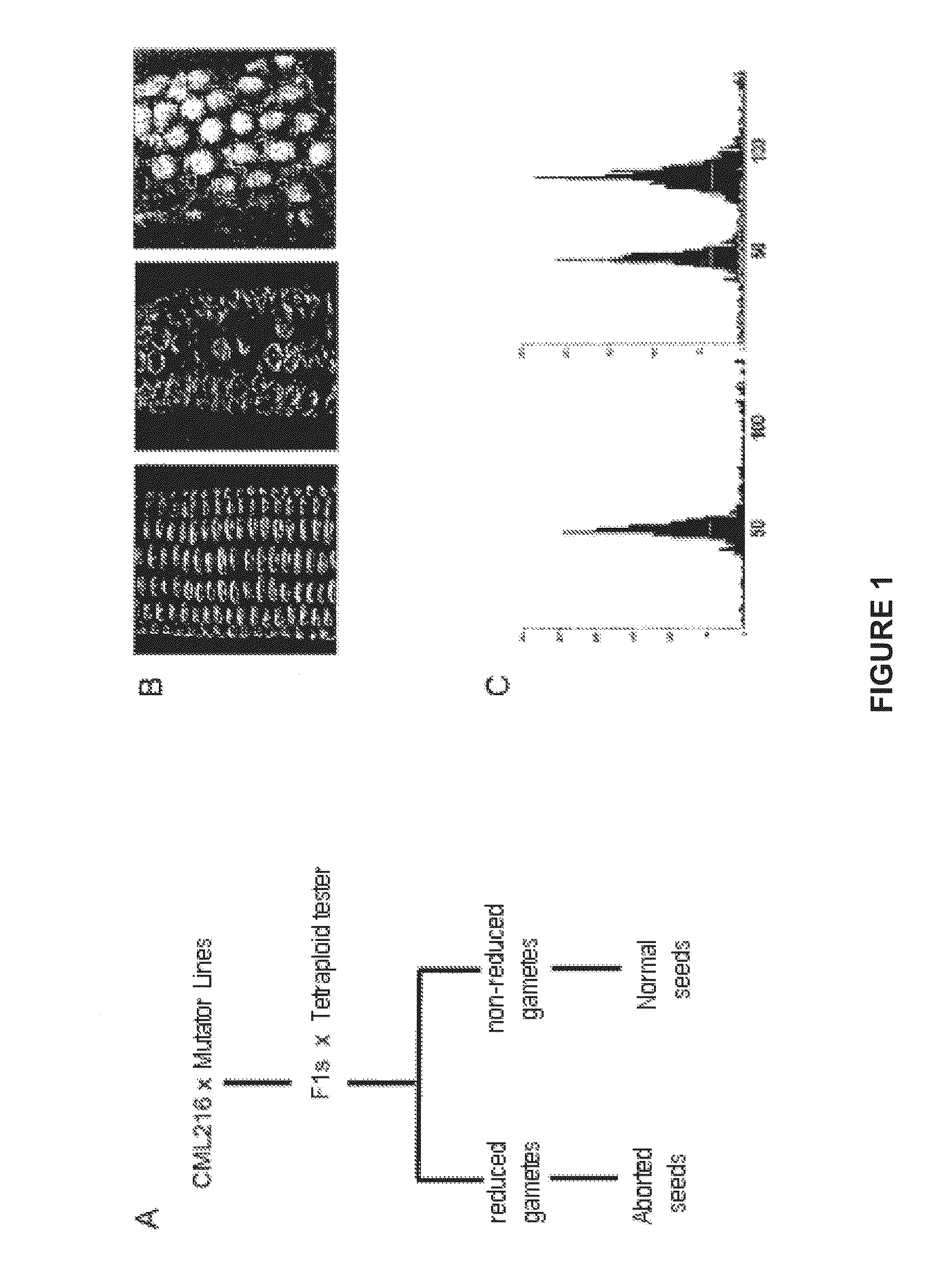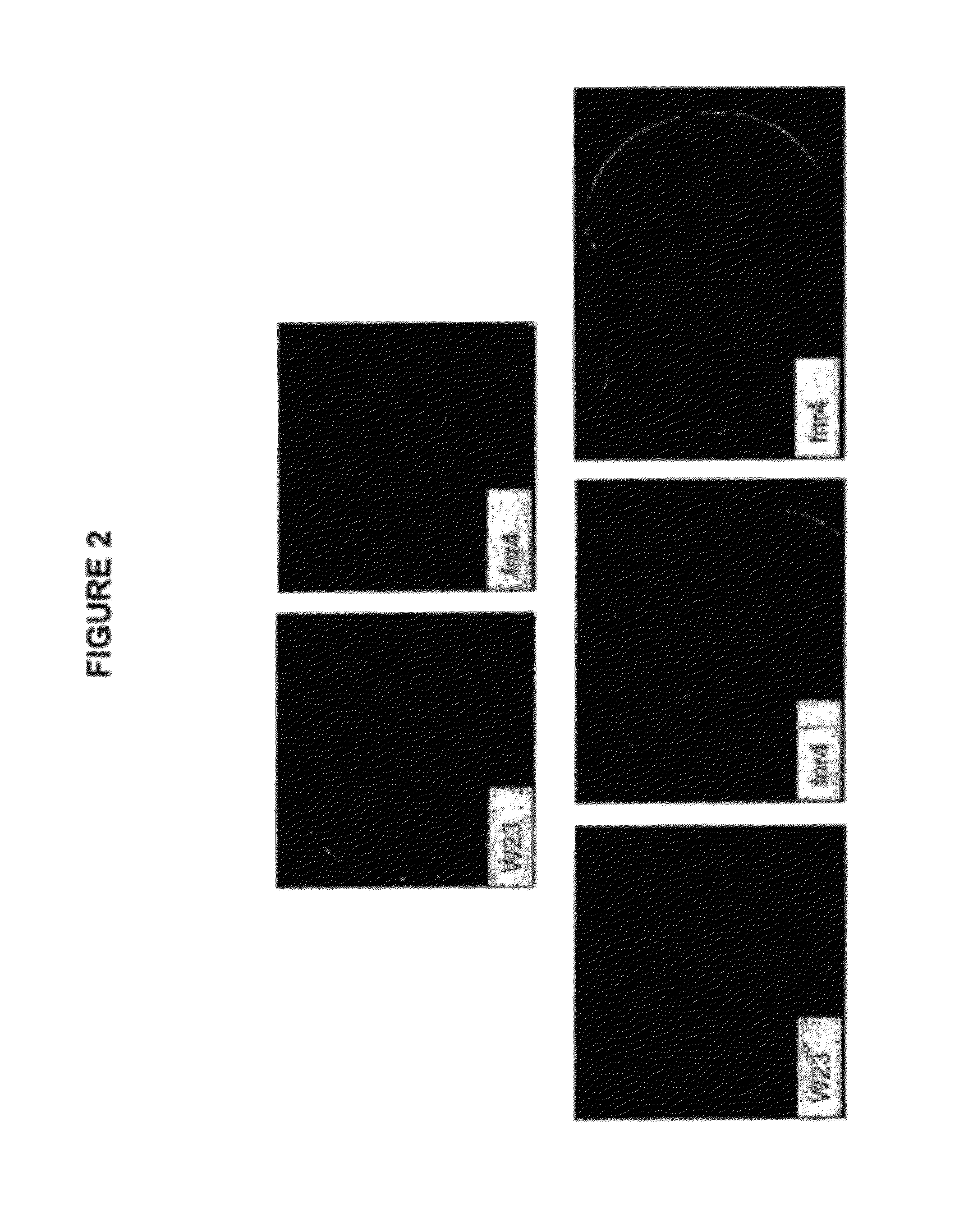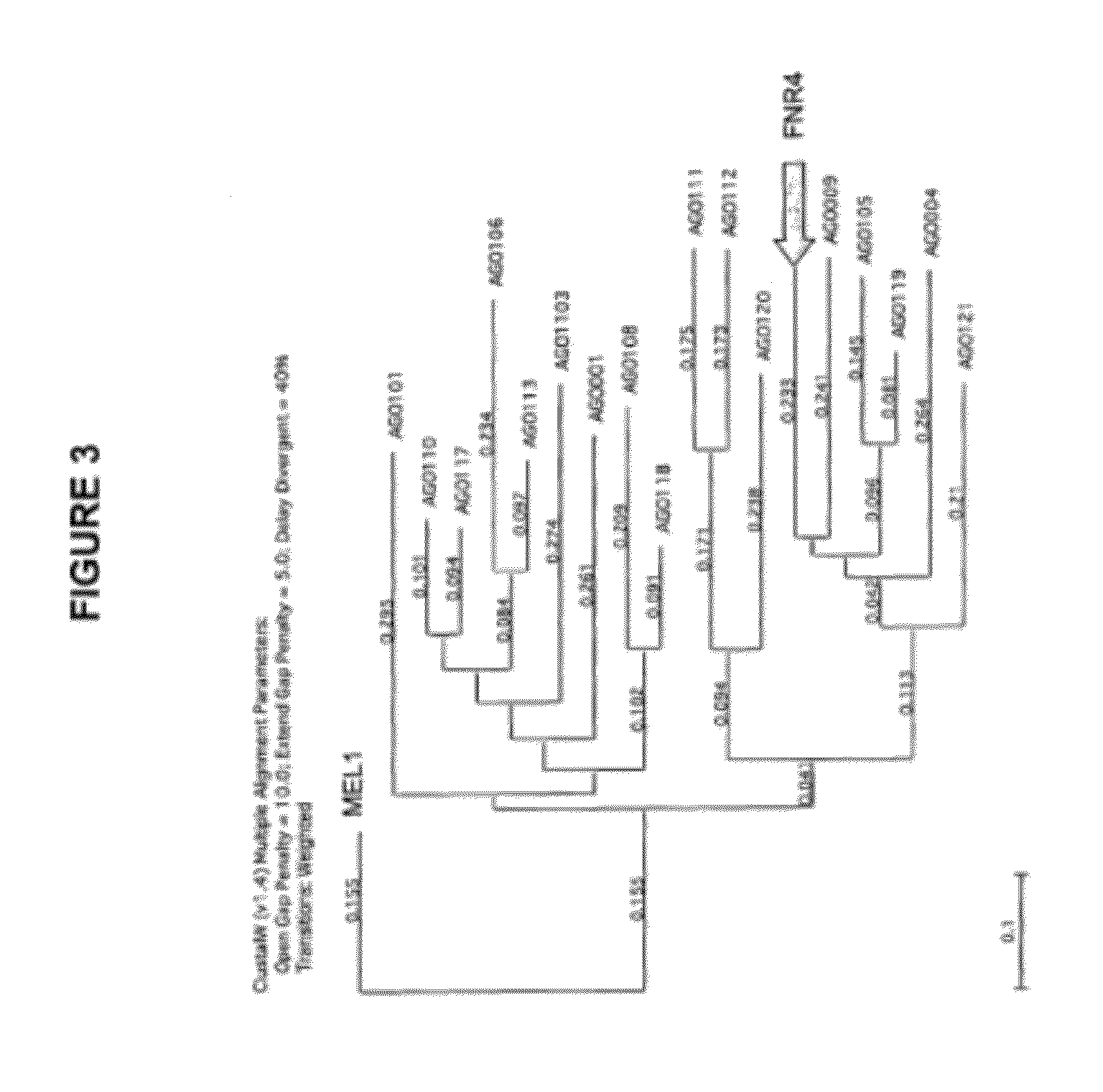Means for inducing apoximis in cultivated plants having sexual reproduction and use thereof for the production of completely or partially apomictic plants
a technology of cultivated plants and apoximis, which is applied in the direction of peptide sources, biochemistry equipment and processes, etc., can solve the problems of not finding apomictic plants among the main cultivated cereals (corn, wheat or rice), and none of these applications can be envisioned in the main cultivated
- Summary
- Abstract
- Description
- Claims
- Application Information
AI Technical Summary
Benefits of technology
Problems solved by technology
Method used
Image
Examples
example 1
Identification of Apomeiotic Plants by Means of a Targeted Genetic Screen
[0035]The results obtained are shown in FIGS. 1A to 1C:
[0036]In order to identify apomeiotic plants, a population of mutagenesis based on transposable elements of Mutator type, in a diploid genetic background, was constructed (FIG. 1A). The screen is based on the response of the albumen to a divergence in the respective ploidy levels of the male and female gametes.
[0037]When, in a wild-type corn plant, a diploid female is crossed with a tetraploid male, this results in an early abortion of the development of the albumen and therefore of the seed.
[0038]The results obtained are shown in FIG. 1B. When the gametes are at the same ploidy level (both haploids, or both diploids), the seed develops normally. In this screen, a tetraploid plant was used as male, and 15 000 mutagenized plants were used as females. The investigation related to the plants which, owing to the absence of meiotic reduction induced by mutation,...
example 2
Identification of the Modified Function in the Mutant Plants
[0040]Since the apomeiotic phenotype of the FNR4 mutant results from the random insertion of a transposable element of Mutator type into the genome, the sequence, which is known, of the Mutator elements was used for identifying the mutated locus by means of a conventional analysis of co-segregation between the phenotype and the sites of insertion of the various Mutator elements.
[0041]A candidate sequence could thus be identified and cloned. Analysis of three independent mutations in the same gene, all resulting from insertions of transposable elements, shows an identical phenotype. The locus identified therefore indeed corresponds to that responsible for the apomeiotic phenotype. Comparison of the sequence of the locus in the public database makes it possible to associate a biological function with this gene. It unambiguously appears to belong to a multigene family, comprising about twenty loci, all identified as encoding p...
example 3
Expression Profile of the Gene and of the Protein in the Wild-Type Forms, the Apomeiotic Mutants and the Apomictic Plants
[0044]The RT-PCR method was used to analyze the expression profile of the gene. The results show that the gene is expressed constitutively in all the tissues analyzed (leaves, mature pollen, pre-meiotic ovules, ovules during meiosis, ovules during gametogenesis, mature ovules before fertilization).
[0045]Using synthetic peptides designed on the basis of the sequence of the protein, antibodies specific for sequences SEQ ID No. 5 and SEQ ID No. 6, which make it possible to visualize by Western blotting the presence of the protein on extracts sampled at various stages of development, were generated. The detection of the antibody by immunodetection is shown in FIG. 5, A: Expression of the protein transcripts in corn. The specificity of the antibody used is validated through the use of mutant lines. B: tissue localization of the protein, limited to the basal part of the...
PUM
 Login to View More
Login to View More Abstract
Description
Claims
Application Information
 Login to View More
Login to View More - R&D
- Intellectual Property
- Life Sciences
- Materials
- Tech Scout
- Unparalleled Data Quality
- Higher Quality Content
- 60% Fewer Hallucinations
Browse by: Latest US Patents, China's latest patents, Technical Efficacy Thesaurus, Application Domain, Technology Topic, Popular Technical Reports.
© 2025 PatSnap. All rights reserved.Legal|Privacy policy|Modern Slavery Act Transparency Statement|Sitemap|About US| Contact US: help@patsnap.com



